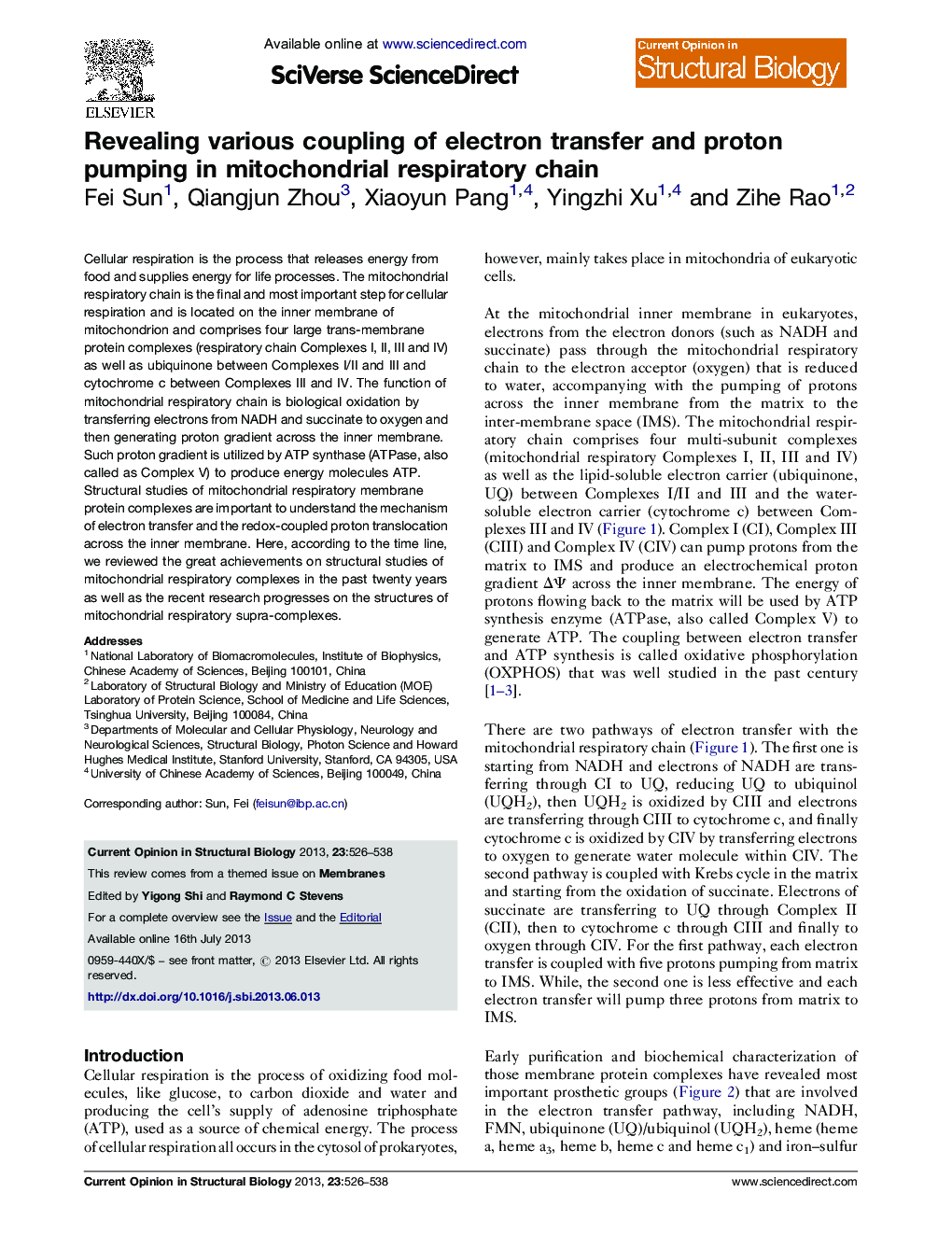| Article ID | Journal | Published Year | Pages | File Type |
|---|---|---|---|---|
| 1979303 | Current Opinion in Structural Biology | 2013 | 13 Pages |
•Review structural studies of mitochondrial respiratory complexes (I–IV).•These complexes couple electron transfer and proton pumping with various mechanisms.•Complex I utilizes an indirect allosteric mechanism.•Complex III utilizes a Q-cycle mechanism.•Complex IV has two proton pathways driven by a direct redox coupling mechanism.
Cellular respiration is the process that releases energy from food and supplies energy for life processes. The mitochondrial respiratory chain is the final and most important step for cellular respiration and is located on the inner membrane of mitochondrion and comprises four large trans-membrane protein complexes (respiratory chain Complexes I, II, III and IV) as well as ubiquinone between Complexes I/II and III and cytochrome c between Complexes III and IV. The function of mitochondrial respiratory chain is biological oxidation by transferring electrons from NADH and succinate to oxygen and then generating proton gradient across the inner membrane. Such proton gradient is utilized by ATP synthase (ATPase, also called as Complex V) to produce energy molecules ATP. Structural studies of mitochondrial respiratory membrane protein complexes are important to understand the mechanism of electron transfer and the redox-coupled proton translocation across the inner membrane. Here, according to the time line, we reviewed the great achievements on structural studies of mitochondrial respiratory complexes in the past twenty years as well as the recent research progresses on the structures of mitochondrial respiratory supra-complexes.
